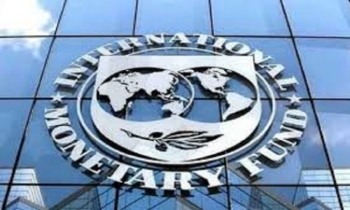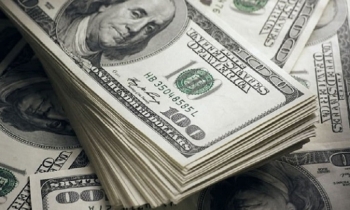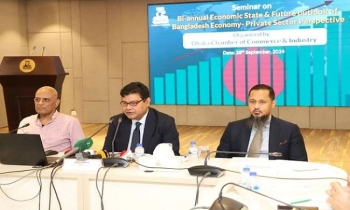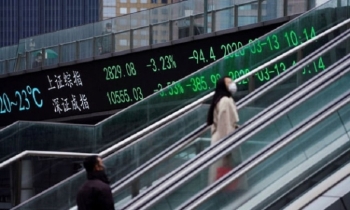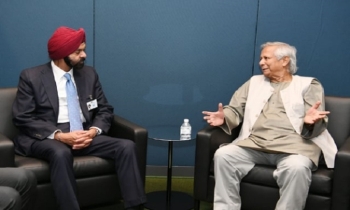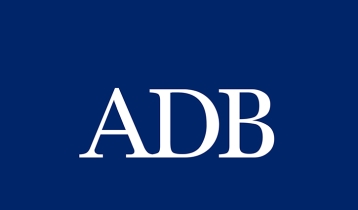Forex reserves: Why $10bn in 2010 was not a worry, but $40bn today is
UNB || BusinessInsider
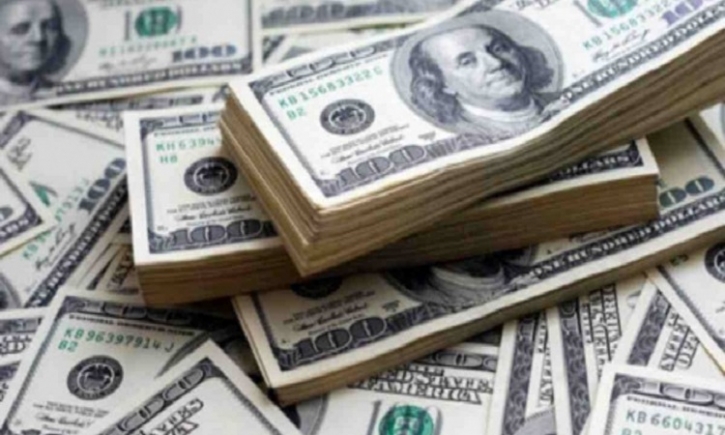
Photo: Representational
Economists have expressed concern just after Bangladesh’s foreign exchange reserves slipped below $40 billion, even though that should be capable of meeting six months import payments, based on imports for the immediate past fiscal.
Such concern was not seen 12 years ago, when Bangladesh’s forex reserves were only $10.60 billion in the FY2010 (2009-10 fiscal).
is roughly the same level, since imports back then were also lower, at around $23 billion, meaning the reserve was enough to cover 4-5 months.
What is worrying now is a surge in imports driven by both demand for raw materials by export-oriented industries and growing consumption among the domestic consumers.
That, allied to an energy crisis caused by both domestic and international factors, is causing significant downward pressure on the forex reserve. Bangladeshis were used to hearing about the reserve rising gradually, reaching a peak of $48 billion a year ago.
But now, these two factors have combined to bring the reserve down quite rapidly below $40 billion, and it is likely even lower, given that exporters have started defaulting on dollar loans taken out of the Export Development Fund, which is funded out of the reserve.
Many economists now believe that foreign exchange reserves in Bangladesh have gone to dangerous levels.
They say, now that the reserves have fallen below $40 billion dollars, it is not possible to cover more than three months of import expenses.
Debapriya Bhattacharya of CPD said how much in foreign exchange reserve is secure for a country depends on the price of energy and commodities in the global markets, dollars required in a month to meet import payments, and whether the demand for import will go up in the coming months or not.
Though the Bangladesh Bank (BB) is showing forex reserves near $40 billion, unencumbered reserves is actually around $31 or $32 billion after excluding dollar support to the export sector (the Export Development Fund is worth $7 billion), he said.
Debapriya said the government is taking the right measures to face the situation, but it is not enough considering the global and domestic situation.
He suggested taking a loan of $1.5 or $2 billion from the IMF as a cautionary step to avert any worsening situation.
Debapriya also pointed out that the current situation (depreciation of taka) would create some opportunities to boost exports and encourage expatriates to send remittances.
But the overall macroeconomic stability has undoubtedly weakened. There is a danger of slowing down the ongoing development activities in the country.
However, the government does not consider the situation to be critical yet. To reduce the pressure on reserves, several cost-effective measures, including load shedding in the power sector, have been taken so that the cost of fuel imports can be kept under control.
The central bank is also dismissing economists' concerns about current forex reserves.
Md Serajul Islam, executive director and spokesperson of BB, said that if the reserves are enough meet the import expenses for three months, there is no danger.
"The reserves we have now will cover more than three months of import expenses. Now we have increased the import duty on all luxury goods. Hopefully, we will reap the benefits," he added.
Bangladesh’s import expenses grew to $80 billion in the immediate past fiscal, but even then, $40 billion should be enough to meet the Bangladesh Bank benchmark of 3 months, and possibly up to six months (half a year).
The inward remittance flow also slipped to $21 billion in FY 22 from $24.77 billion in FY 21.
The real concern stems from the fact that there are now issues beyond the government’s control at play. With gas reserves dwindling fast, Bangladesh has suddenly become highly dependent on energy imports, and their prices have been rising to record levels in the international market, with a pandemic-ending rally exacerbated by the war in Ukraine.
Bangladesh was forced to sit out two rounds of purchasing LNG on the international market recently due to exceptionally high price, and that directly led to the country’s energy crisis, as production of gas from the country’s own gasfields is nowhere near enough these days to meet demand. That led to the return of load shedding.
There is also the issue of export income not being fully repatriated to the country. Besides, the garment sector also imports 60 percent of its export volume.
In the face of all this, the government’s steps to cut imports of luxury goods are also a step in the right direction. But whether they will be enough, only time will tell.

